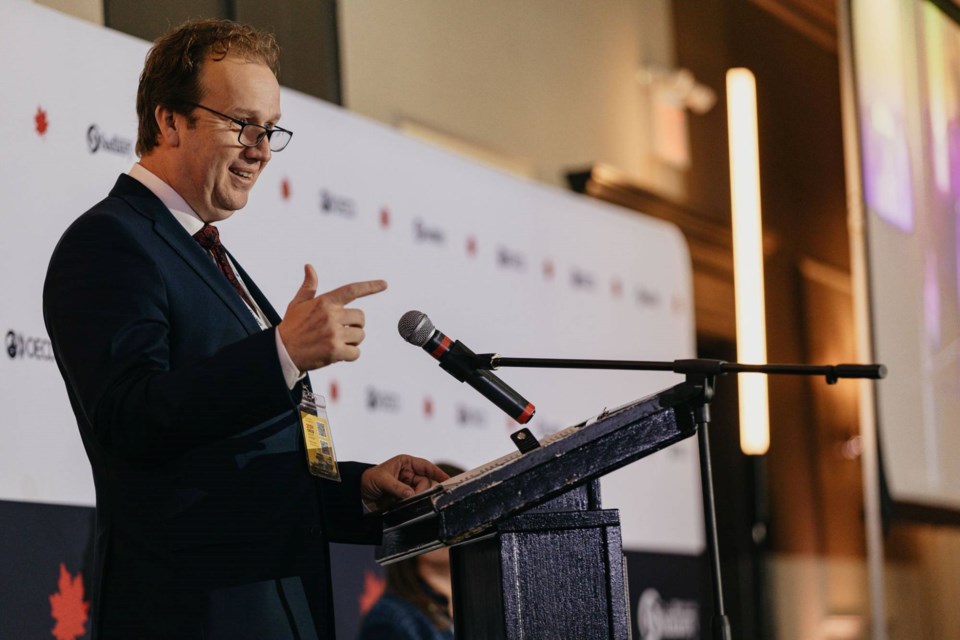SUDBURY - The City of Karratha in Western Australia’s Pilbara region is a hive of mining-related activity.
Known for its rich iron ore deposits, the region has a population of just over 24,000 people. Karratha alone generates a whopping $20 billion annually in gross domestic product (GDP).
Put in other terms, each person working in the region contributes $375 per hour to the GDP; that’s in comparison to the national average of $56 per hour.
"That's how important our region is to the national economy of Australia," said Daniel Scott, mayor of the City of Karratha, while speaking in Sudbury this week.
Situated on Australia's northwestern coast, Karratha has become a kickoff point for much of that region’s mining activity.
Its airport is the second busiest regional airport in all of Australia, Scott said, handling 8,500 passengers per day, comprised largely of fly-in, fly-out workers travelling through the region for work.
Over the last decade, brand-new buildings have popped up all through the city — including a AUD$173-million hospital completed in 2021 — thanks to the Royalties for Regions Program, which ensures that 25 per cent of all royalties generated from mining-related activity are reinvested back into the community.
And signs of personal wealth are becoming more evident, as workers with disposable incomes are seen driving around town in RAMs, GMCs and Chevrolets.
“You’d swear it's a mini Canada or U.S.,” Scott chuckled. “There's these big, brand-new pickup trucks everywhere."
All this activity has positioned Karratha as the “new city of the north,” Scott said, but it hasn’t come without its challenges.
Regulatory framework put in place by the federal government restricts how some of the revenues can be spent, and with such a low voter base, it can be “very hard to be heard,” Scott said.
To address some of the growing pains, he said, Karratha has spent the last year crafting a new strategic community plan, taking input from residents, including its large Indigenous population.
It marked a milestone for the community: the city had the largest participation in a community survey ever conducted in the history of the region, Scott said.
That information is now being put to use in determining the community’s needs, and how to manage its growth, over the next decade.
"So our focus as the city of Karratha is to make sure that we're advocating on our people's behalf to make sure we get the best outcomes for our community,” Scott said.
The Karratha experience gets to the heart of the premise behind the 2024 Conference of Mining Regions and Cities, hosted by the Organisation for Economic Co-operation and Development in Sudbury Oct. 8 to 11.
Held annually, the conference brings together delegates from the public and private sectors, academia, and Indigenous communities to talk about how to mine sustainably, while balancing the socioeconomic interests of the communities impacted by mining activity.
Participants from more than 25 countries were participating in the Sudbury event.
Nadim Ahmad, deputy director of the OECD Centre for Entrepreneurship, SMEs, Regions and Cities, called the conference “extraordinarily timely” as the world collectively looks to reduce its carbon emissions by adopting battery-electric technology and renewable energy solutions.
“When we think about critical minerals, they are fundamental ... to that green transition,” Ahmad said. “There will be no net-zero without that green transition.”
Hosting the conference in Sudbury — an area with both a high concentration of mining activity and a large population of Indigenous peoples — is an "extraordinary privilege," he said, as it offers plenty of lessons in bridging the gap between those two worlds.
Sudbury also has an important history of environmental remediation with its well-known regreening story, he added.
"In order to have a future-proof, resilient process, we need to understand the impacts it has across society, the inequalities different pathways may generate," Ahmed said.
"And inequalities themselves have costs, and the costs themselves undermine the progress and the resilience of any transition."
Sudbury Mayor Paul Lefebvre said he’s made it a priority over the last two years in office to build stronger relationships with the city’s Indigenous neighbours —Atikameksheng Anishnawbek and Wahnapitae First Nation — to ensure they have an equal voice in planning for the future.
“If Indigenous communities win, we all win,” Lefebvre said. “And I think when we start from that premise and from that basis, it changes how we look at how we deal with things on economic, social services, development.”
Lefebvre noted that, following the conference, the city will work with the OECD on a research project examining the economic, social and environmental impacts of the mining sector on communities in Northern Ontario.
As part of the case study, OECD will look at existing regional strategies and policies, and draw up recommendations for the federal and provincial governments on how to improve the business environment for mining in the North.
Lefebvre said it will set the stage for future mining activity through the region.
“This conference isn't just about addressing today's challenges; it's about charting a whole path forward together,” he said. “We're here to rethink mining in a way that balances economic growth with environmental stewardship, inclusivity and long-term sustainability.
“Greater Sudbury is a city of resilience, innovation and transformation, and with the expertise that is here today, I believe we can forge new pathways for mining regions worldwide.”
